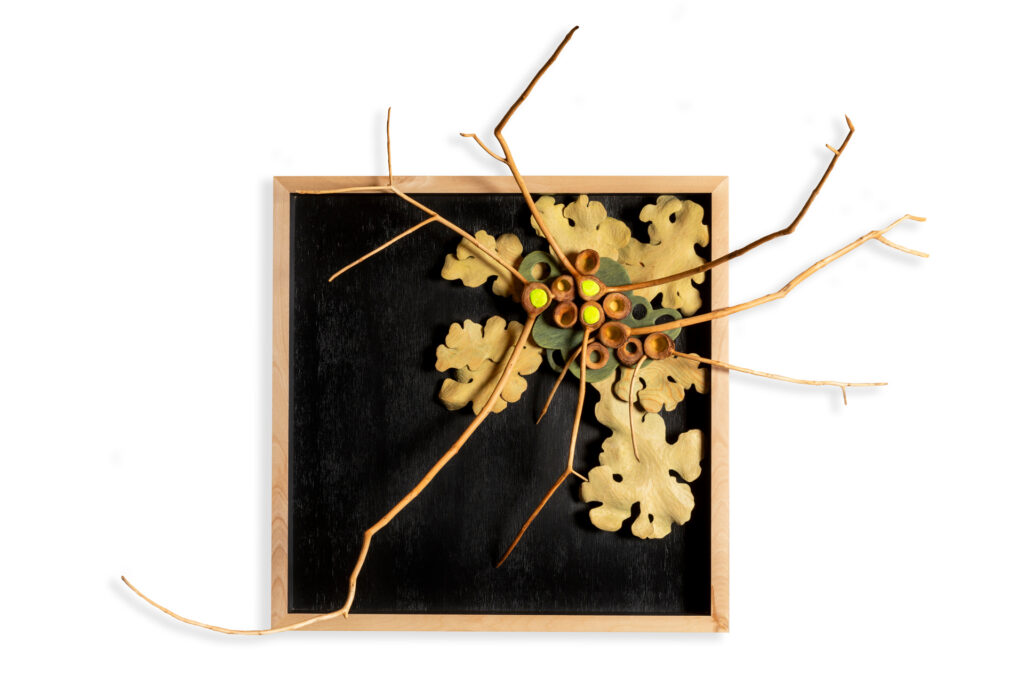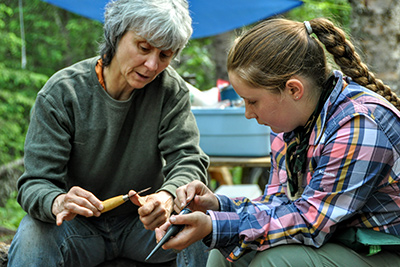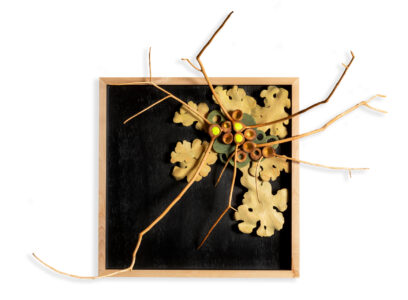
Marianne Stolz
• wood from the boreal forest •
The boreal forest is filled with lichens. They are familiar to everyone yet known by few. Once I started to pay closer attention to these organisms, I was rewarded with inspiration on many levels.
As a sculptor, I drool over their diversity in shape and color. The science of lichens is mysterious and puzzling and full of surprises. Their life strategy seems to defy our cultural tendencies. For example, lichens grow very slowly. Patiently waiting is their strategy to survive harsh cold, long dry spells–and even the extreme environment of space. Their identity is plural; they are a symbiotic partnership between fungi (including filamentous fungi and a yeast) and a photosynthetic bacterium or alga. Working together, they turn barren rock landscapes into habitats for other life. Lichens refuse to be categorized, disregarding the frame we try to place around them.
Special thanks to Celia Miller, a UAF lichenologist, for providing further information on lichens.
MARIANNE STOLZ
The love of the outdoors has been an integral part of my life, guiding decisions from where to live to the themes of my art. I was born and raised in Germany, where I graduated from the Wood Carving School Berchtesgaden with a Journeyman degree. My explorations brought me to Fairbanks, where I have been carving and teaching at the Folk School since.
Website: folk.school

JENNIFER MOSS
Jennifer Moss is a visual artist who uses contemporary visual elements to interpret the natural environment. Inspired by monochromatic winters, summer days brimming with light, and northern extreme weather events, Moss uses a range of mediums to explore figurative and abstract imagery and elusive connections within ecosystems. Moss studied at the Pacific Northwest College of Art and is an instructional designer and adjunct faculty at the University of Alaska Fairbanks.
Website: jmossart.com • Instagram: jmoss.art• Linkedin: 2farnorth


